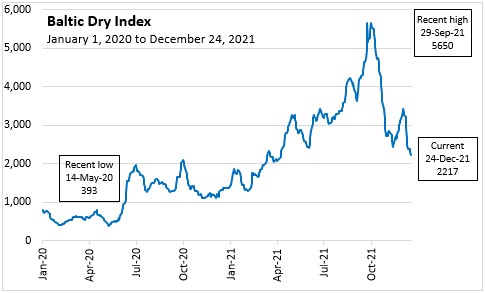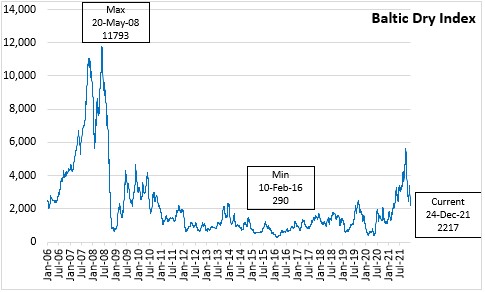The Economics and Statistics Division maintains archives of previous publications for accountability purposes, but makes no updates to keep these documents current with the latest data revisions from Statistics Canada. As a result, information in older documents may not be accurate. Please exercise caution when referring to older documents. For the latest information and historical data, please contact the individual listed to the right.
<--- Return to Archive
For additional information relating to this article, please contact:
December 31, 2021BALTIC DRY INDEX, DECEMBER 2021 The Baltic Dry Index (BDI) measures procurement costs of shipping raw materials by sea. When these costs go down, goods producers benefit from lower shipping costs, and consumers benefit from lower prices for finished products. Higher values indicate most costly shipping, with impacts on goods producers and consumers.
Recent Activity (January 2020 to December 2021)

The Baltic Dry Index started 2020 with a value of 976 on January 2 and reached a recent low of 393 on May 14, 2020. Values increased later in 2020 and on January 4, 2021, the Baltic Dry index started the year at 1,374. By October 7, 2021 the index had climbed steadily to 5,650. Since early October, the Baltic Dry Index has fallen by more than 60% from its peak value, ending the year at 2,217 on December 24, 2021.
Long Run (January 2006 to December 2021)

Although the Baltic Dry Index indicates more costly shipping than was observed through much of the period before the COVID-19 pandemic, it remains well below peaks (11,793 in May 2008) observed prior to the global financial crisis.
The Baltic Exchange
Baltic Dry Index Commodities
Trading View
Bloomberg
<--- Return to Archive